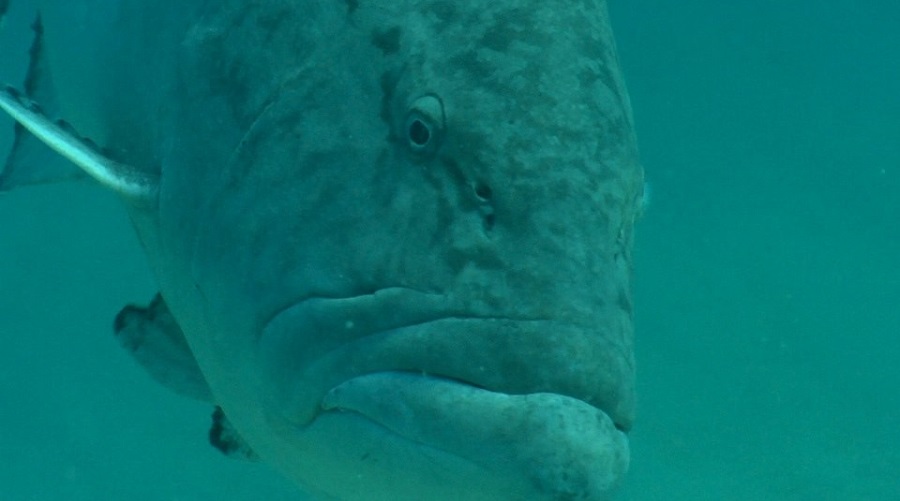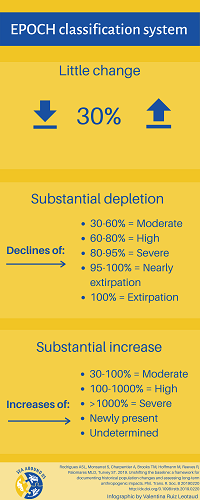
Gulf grouper. Photo by Alfredo Barroso, Wikimedia Commons.
How much have humans affected the population of other species on the planet? A new methodology for documenting the cumulative human impacts on biodiversity aims to answer this question.
Dubbed EPOCH -for Evaluation of Population Change- the methodology was developed by a group of scientists from universities in Europe, Asia, and North America. It provides a standardized framework for organizing disperse data on individual species or populations of animals and plants that have been affected by urbanization, pollution, fishing, hunting, over-harvesting, and other anthropogenic activities.
Assessing impact requires contrasting the status of current populations with a reference state or baseline. However, the experts were faced with the challenge that for many species the baseline is not known because they have been impacted for a long time and those impacts have been forgotten. This phenomenon responds to the concept of ‘Shifting Baseline Syndrome’ developed by the Sea Around Us’ principal investigator and University of British Columbia professor Daniel Pauly.
“So we decided to define baseline not as a particular date but as a reference state, that is, the population size expected today in the absence of human actions,” said Ana Rodrigues, lead author of the study from the University of Montpellier. “This means that any changes in relation to this baseline reveal the cumulative extent of human impacts.”
Rodrigues explained that the flexible definition allows for the baseline to be tailored to each population being studied and to be estimated from historical data, by comparing with an area where a species is still relatively intact, or by relating a less-known to a better-known species.
“For example, for Gulf grouper, we set the baseline in the 1940s, before industrial exploitation kicked off. Back then, it was considered a fish commonly present in the Gulf of California, according to historical records and interviews with old fishers. However, as time passed, data shows that it has been depleted through past overfishing and that in more recent years it is considered rare by new generations,” Rodrigues said. “This is an example of a relatively recent temporal baseline but for the bowhead whales in the Barents Sea we went back 400 years, prior to industrial whaling.”
Each assessed species is classified into one of 11 EPOCH categories, based on the extent to which humans have affected their population numbers. Species can have experienced little change, their numbers may have moderately or severely increased or decreased, they may have been extirpated, or they may be newly present in a certain area.
“The advantage of going back in time and establishing these categories is that we can see the whole picture of how much more we have lost over hundreds of years,” said Deng Palomares, a co-author of the study and the Sea Around Us project manager at UBC’s Institute for the Oceans and Fisheries.
According to Palomares, her own experience setting an as-early-as-possible baseline, as it is done with the Sea Around Us’ fisheries data, has already been useful to establish the reality of how much has been lost.
“Now, imagine going back hundreds of years, when explorers describe codfish as being so abundant in the coastal waters off Newfoundland that one could walk on their backs. With this framework, we bring the baseline nearer to a population’s ‘virgin biomass,’ that is, the biomass that was there before humans invented powerful machines to harvest these resources and in the process destroy them.”
For Rodrigues, Palomares, and their colleagues, these assessments that show the cumulative level of population change through time should help set realistic targets for the recovery of affected populations. “With the United Nations having just declared 2021-2030 the Decade of Ecosystem Restoration, ensuring future conservation efforts take into account the history of past change is more pertinent than ever,” they wrote in their paper.
The paper “Unshifting the baseline: a framework for documenting historical population changes and assessing long-term anthropogenic impacts” was published today in Philosophical Transactions B.



